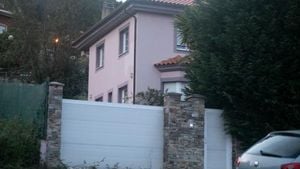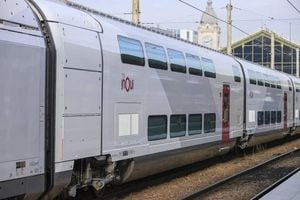Nasa astronauts Butch Wilmore and Sunita Williams are finally returning to Earth after an unexpectedly lengthy nine-month mission aboard the International Space Station (ISS). Originally scheduled to stay just eight days, the duo's mission stretched dramatically due to multiple issues with Boeing's Starliner spacecraft. Their return, on the day of March 18, 2025, marks the end of what has turned out to be one of the longest stays for American astronauts aboard the ISS.
Wilmore and Williams launched on June 5, 2024, as part of the first astronaut-crewed flight of Boeing's Starliner capsule. Problems began almost immediately upon docking, with the Starliner encountering several technical difficulties, particularly involving propulsion system helium leaks and thruster issues. NASA decided to keep Wilmore and Williams onboard the ISS rather than risk the spacecraft’s safe landing.
For Wilmore, this mission has been both challenging and rewarding. Responding to claims from various quarters, including some political figures, labeling their time as "stranded" or "abandoned," Wilmore stated: "It's work. It's fun. It's been trying at times, no doubt. But 'stranded?' No. 'Stuck?' No. 'Abandoned?' No." His perspective emphasizes the proactive and engaging nature of their extended mission, where they continued to engage with scientific experiments and maintenance aboard the ISS.
The four astronauts scheduled to return home will include Wilmore, Williams, Crew 9 commander Nick Hague, and cosmonaut Alexander Gorbunov, who launched to the ISS last September aboard SpaceX's Crew Dragon capsule. Their undocking from the ISS was planned for 1:05 AM EDT on March 18, followed by their splashdown at approximately 5:57 PM EDT off the Gulf Coast of Florida.
NASA officials outlined the flight plan: after undocking, the Crew Dragon will execute necessary de-orbit burns, beginning with the jettisoning of the trunk at around 5:06 PM. This will be followed by the deployment of drogues and main parachutes, slowing the capsule for its ocean landing. Importantly, the recovery ship from SpaceX will be positioned to assist the crew as they exit the spacecraft and begin their re-adaptation to gravity.
This mission brings Wilmore's total time spent aloft to 464 days and moves Williams to 608 days overall, marking her as the second most experienced U.S. astronaut after Peggy Whitson. Williams also holds the record for total spacewalking time by any female astronaut, spanning 62 hours and 6 minutes, achieved during this lengthy mission.
The decision to keep Wilmore and Williams aboard the ISS for nearly nine months reflects NASA's broader strategy of minimizing disruption and maintaining crew rotations. The next scheduled rotation, Crew 10, launched on March 14, 2025. Their mission included just two crew members to allow for overlapping operations with the extended Crew 9, ensuring the ISS could continue its scientific work uninterrupted.
While the mission duration has garnered attention, it does not exceed the U.S. record for the longest single flight, which belongs to astronaut Frank Rubio, who spent 371 days in orbit during 2022-23. Nevertheless, it reshapes the narrative of what astronauts can expect during extensive missions, especially as spaceflight technology continues to evolve.
Wilmore and Williams' experiences aboard the ISS highlight the importance of resilience, teamwork, and adaptation within the demanding environment of space. Looking forward, both astronauts must now focus on the rehabilitation processes necessary to readjust to life back on Earth after their lengthy period of weightlessness, which is integral to preserving their long-term health.
Through their service, Wilmore and Williams not only contribute to numerous scientific projects but also cultivate public interest and support for NASA's ambitious future endeavors, ensuring the agency's continued presence and leadership within the international space community.
Lastly, as Wilmore and Williams prepare for their return, the crew anticipates their re-entry with hope, recognizing the significance of their mission and the next steps in their respective careers as experienced astronauts.







